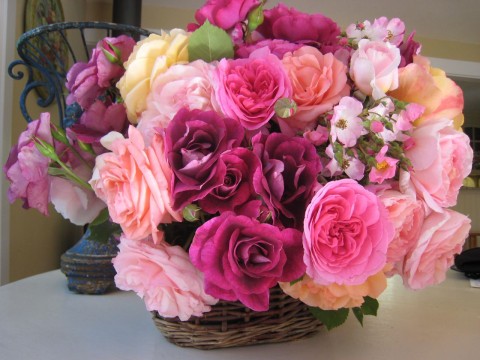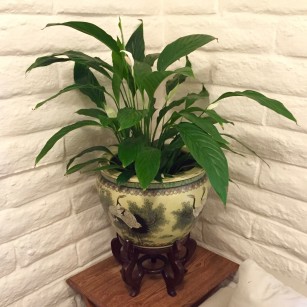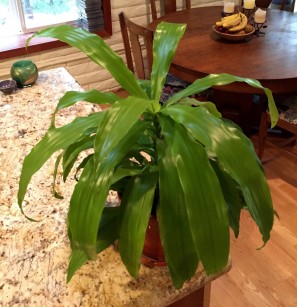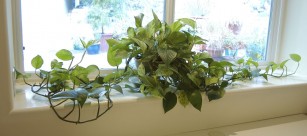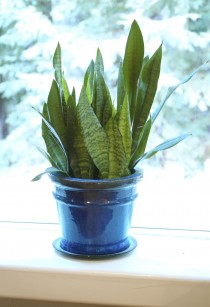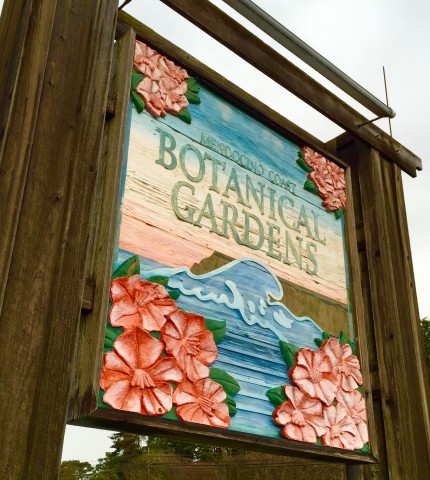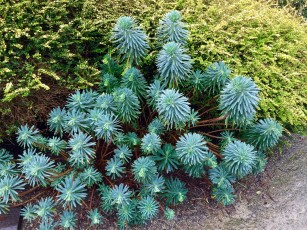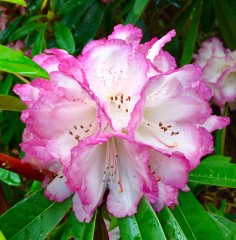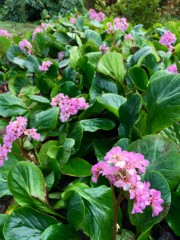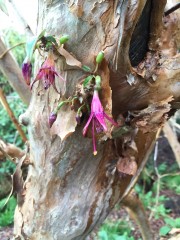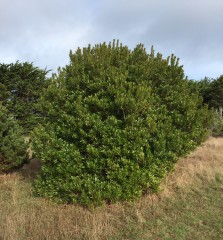
I have an Autumnalis flowering cherry tree that blooms year round. The last blooming cycle started in late November and it’s still blooming now despite heavy rains. This tree came into my life 20 years ago as a bare root tree. We’re old friends. Now is the time to add ornamentals and edibles like fruit, nuts, berries and vegetables while they’re available in bare root form. They are easy to plant, economical and establish quickly.
Every year there are more fruit tree varieties available in bare root including delicious time honored heirloom varieties as well as modern favorites. It?ll be hard for me to decide which ones I?ll recommend for edible gardens I design this year.
Several years ago Orin Martin, the manager, master orchardist, horticulturalist and
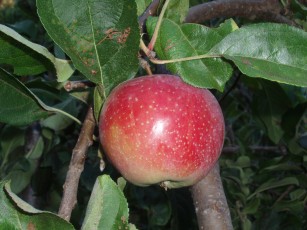
teacher extraordinaire at UCSC Alan Chadwick garden visited a group of fellow landscape designers bringing with him a bag of his favorite apples. As he cut slices of each for us to sample his highest praise went to Cox?s Orange Pippen, Golden Delicious, American Golden Russet, McIntosh and Mutsu apples. Plant these varieties and you could be eating apples from August through October. Did you know that at one time in American history russet apples were the most desired and wages were actually paid in cider made from russet apples?
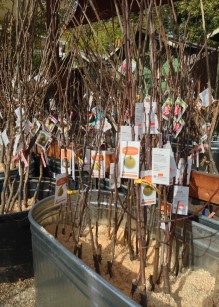
If it’s peaches you crave, Renee of Mountain Feed & Farm Supply shared with me some peach leaf curl resistant varieties they carry. Listed by UC Integrated Integrated Pest Management Program they include Frost and the Q-1-8 white peach. The Frost is a medium-sized, freestone yellow peach with a delicious flavor. It has showy pink flowers in the spring. They ripen in July and require 700 hours of winter chill. The Q-1-8 peach ripens in July also. This white-fleshed, semi-freestone peach is sweet and juicy like Babcock and has showy blossoms in late spring. Peaches are self-fruitful and don’t require another peach to pollinize them.
What fruit tree varieties can you grow here in the mountains? Well, almost everything. Most of us get 700-900 chilling hours per winter. What does that mean? Well, many fruit trees, lilacs and peonies need a certain number of hours during dormancy where the temperature is 45 degrees or less. You can give the plant more chilling in the winter and that’s just fine but not less. Those in coastal Santa Cruz can grow Fuji apples as they require only 300 hours of chilling but not Red Delicious. We can grow both.
What if you don’t get full sun where you’d like to grow fruit trees? Apples, pluots and plums are good choices for an area that gets some sun- at least 5 hours- every day during the growing season. The ideal is full sun but these trees will still set and ripen some fruit in partially shaded conditions. With peaches, nectarines or apricots it’s a different story. These fruits need hot sun to develop sweet, tasty fruit. Too little sun and they will not deliver anything close to what you have in mind.
Shop for your plants in January or February while they are still dormant. Once leaves emerge or flower buds start to swell tree roots have already started growing. You want your tree to start developing new permanent roots in their final home. Stone fruits such as apricots, peaches,
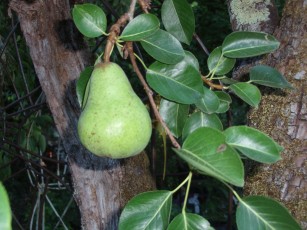
plums and cherries are going to start waking up first so they are best put in the ground soon. Fruit trees like pears and apples wake up later so you can wait a bit longer to plant those varieties.
With this in mind be wary of spring sale bare root stock. Also trees in packages may have had their roots pruned to fit inside or the packaging material may have dried out or become soggy. Better to see the roots for yourself before you bring your new addition home.
When May rolls around I?ll be anxiously awaiting the first cherries, apricots and peaches. Then the early nectarines arrive, sweet and juicy followed by the plums that ripen next. Later in the summer apples, figs and pears make their debut as well as late ripening plums and peaches. With a little planning you can have fresh fruit 7 months of the year.
By growing your own fruit you?re not at the mercy of mechanical harvesters and shipping practices. You can grow fruit and harvest it when the time is right. Homegrown fruit is a world apart from agribusiness and much less expensive than the Farmer’s Market.

